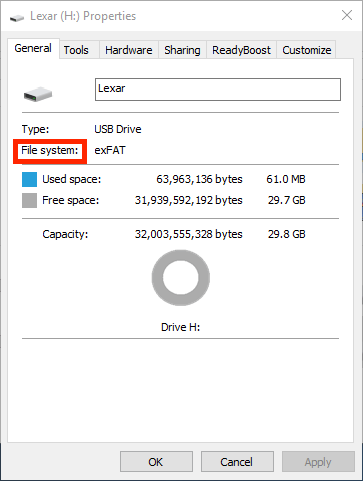
Type select partition # and press Enter (where # is the number of the partition on flash drive). Type select disk n and press Enter (where n is the number of your USB drive).ĥ. Run diskpart as administrator: press Win+R to open Run dialogue and input diskpart, then hit on Enter.ģ. Format SanDisk USB to exFAT in Windows by Diskpartįirst, connect your USB drive to your computer and make sure it can be detected.ġ.
Sadisk usb drive formatter how to#
How to format SanDisk USB to exFAT in Windows? Here provides you with two methods to finish this operation.

How to format SanDisk USB to exFAT in Windows 10/8/7? So, formatting SanDisk USB to exFAT in Windows/Mac can be your best choice. Compare with FAT32, exFAT has faster transfer speed and it keeps the high compatibility with many operating systems and devices. So, you’d better format your USB drive to exFAT to broke the limitation of 4GB for Windows 10/8/7 or Mac. However, exFAT can broke the limitation of 4GB for a single file. Windows may notice you that “ File is too large for destination file system”. If you purchased a new SanDisk USB with FAT32 file system, and want to copy a single file larger than 4GB to it. In a nutshell, the exFAT achieves a great balance between FAT32 and NTFS and is suitable for use on various removable memory cards and USB flash drives. And it also works on some other devices like digital cameras that don’t support NTFS.
Sadisk usb drive formatter mac os x#
Mac OS X offers full read-write support for exFAT and it can be accessed on Linux after installing some additional software. On the other hand, the exFAT works well with large-sized partition up to 8TB in size while FAT32 can only work with a partition up to 2TB in Windows.īesides, it is more compatible than NTFS. That is to say, you can store the single file larger than 4GB on a partition with exFAT file system. It is optimized for flash memory such as USB flash drives and SD cards. On one hand, this file system makes up for the limit of FAT32, maximum file 4GB in size. ExFAT (Extended File Allocation Table) is a relative new file system that was first introduced to us in 2006.


 0 kommentar(er)
0 kommentar(er)
